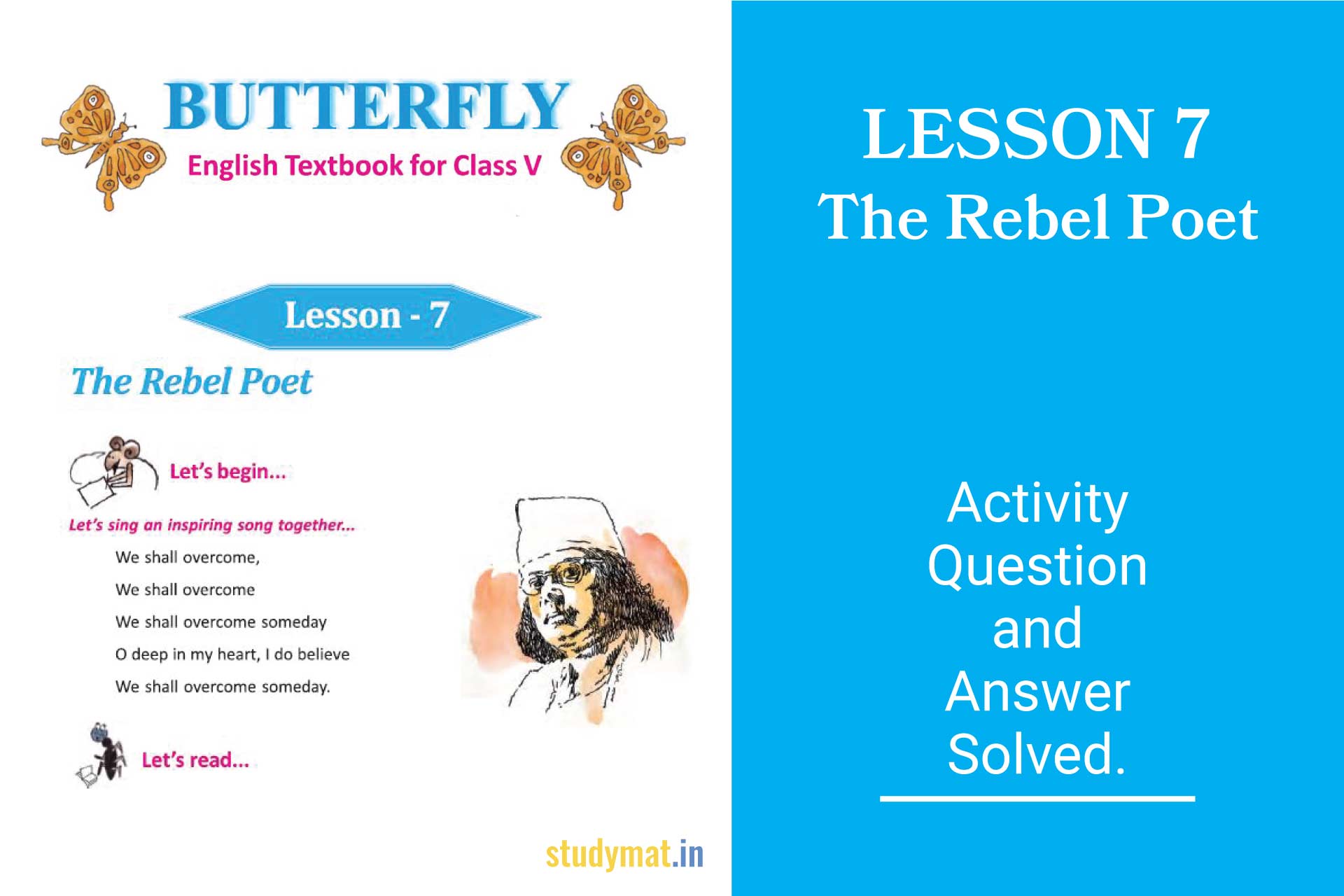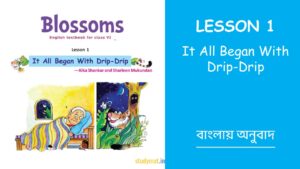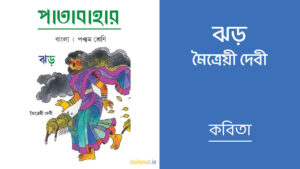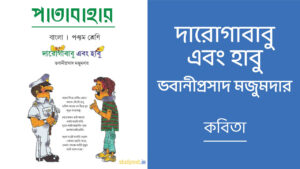“Butterfly” is the English textbook for class 5 approved by the West Bengal Board of Primary Education (WBBPE). Here we will discuss the Activity Questions and Answers from Lesson 7, The Rebel Poet of this book.
THE REBEL POET – QUESTION & ANSWER
ACTIVITY 1
Complete the following sentences:
(a) Pritam was to sing the song ‘Karar oi louha kopat’.
(b) Nazrul was born in the village of Churulia.
(c) Burdwan district is in West Bengal.
Read Also:
Revision Lesson – Question & Answer | Class 5 | Butterfly
ACTIVITY 2
Answer the following questions:
(a) Was India independent when Nazrul was born?
Ans: No, India was under the British Rule when Nazrul was born.
(b) Name some of the folk plays that young Nazrul had written.
Ans: Young Nazrul had written some of the folk plays that are ‘Daata Karna’ and ‘Kabi Kalidas’.
(c) Who was Nazrul’s teacher?
Ans: Nibaran Chandra Ghatak was Nazrul’s teacher.
(d) Who was Kumud Ranjan Mullick?
Ans: Kumud Ranjan Mullick was the Head Master of the school where Nazrul joined.
Read Also:
India : Superpower in Cricket | Lesson 1 | Question & Answer | Class 5 | Butterfly
ACTIVITY 3
Tick the right answer:
(i) His poems inspired the youth
(a) to fight the British
(b) to help the British
(c) to talk to the British
Ans: His poems inspired the youth – (a) to fight the British.
(ii) A poem that he wrote was
(a) Kheya Parer Tarani
(b) Prashna
(c) Bodh
Ans: A poem that he wrote was – (a) Kheya Parer Tarani.
(iii) Nazrul was called
(a) the fiery poet
(b) the rebel poet
(c) the inspired poet
Ans: Nazrul was called – (b) the rebel poet.
Read Also:
A Feat on Feet | Lesson 2 | Question & Answer | Class 5 | Butterfly
ACTIVITY 4
Write ‘T’ for true and ‘F’ for false statements:
(a) Nazrul was born when India was still under the British rule. T
(b) Nazrul was not attracted to folk theatre. F
(c) In school, Nazrul met the great poet Kumud Ranjan Mullick. T
(d) Nazrul served the Indian army under the British rule. T
(e) Nazrul fasted for thirty days. F
Read Also:
Phulmani’s India | Lesson 3 | Question & Answer | Class 5 | Butterfly
ACTIVITY 5
Fill in the chart with information from the text:
| Year | Event |
|---|---|
| 1910 | Nazrul met the revolutionary Nibaran Chandra Ghatak, who was his teacher. |
| 1920 | The regiment was disbanded. |
| 1922 | Nazrul started a magazine ‘Dhumketu’ where he published ‘Anandamoyeer Agamone’, a poem. |
| 1923 | Nazrul was released from jail. |
Read Also:
Memory in Marble | Lesson 4 | Question & Answer | Class 5 | Butterfly
ACTIVITY 6
Answer the following questions:
(a) Who inspired Nazrul to write poems?
Ans: Kumud Ranjan Mullick inspired Nazrul to write poems.
(b) Why did Nazrul have to leave the army?
Ans: In 1920, the regiment was disbanded so Nazrul had to leave the army.
(c) In which magazine was the poem Anandamoyeer Agamone published?
Ans: The poem Anandamoyeer Agamone published in ‘Dhumketu’ magazine.
(d) Why did Nazrul start fasting?
Ans: Nazrul started fasting because it was his way of protesting against the torture of the British.
Read Also:
My School Days | Lesson 5 | Question & Answer | Class 5 | Butterfly
ACTIVITY 7(a)
Underline the adverbs in the following sentences. Group them under ‘Adverb of manner’, ‘Adverb of time’ and ‘Adverb of place’:
(1) Now I will go to school.
(2) He sat beside me.
(3) He will watch a play tomorrow.
(4) She eagerly waited for the result.
(5) The train moved slowly out of the station.
(6) We won the match yesterday.
(7) Come here.
(8) I shall gladly do it.
Read Also:
The Clever Monkey | Lesson 6 | Question & Answer | Class 5 | Butterfly
ACTIVITY 7(b)
Let’s classify the adverbs in the following chart:
| Adverb of Time | Adverb of Manner | Adverb of Place |
|---|---|---|
| Now | Eagerly | Beside |
| Tomorrow | Slowly | Here |
| Yesterday | Gladly |
Read Also:
The Rebel Poet | Lesson 7 | Bengali Translation | Class 5 | Butterfly
Buildings to Remember | Lesson 8 | Question & Answer | Class 5 | Butterfly
ACTIVITY 8
Let’s learn how to paint pots.
- A pot is bought.
- It is washed with water.
- It is dried in the sun.
- It is painted.
- Polish is applied to make the surface shiny.
Now add linkers to show the process of painting pots. You may use the following linkers:
| at first, then, at last, next, thereafter |
Ans:
The process of painting a pot passed through the following stages:
To prepare it, a pot is brought from the market at first. Then it is washed with water. Next, it is dried in the sun. Thereafter it is well painted. At last, polish is applied to make the surface shiny.
Read Also:
The Bird’s Eye | Lesson 9 | Question & Answer | Class 5 | Butterfly
A Great Social Reformer | Lesson 10 | Question & Answer | Class 5 | Butterfly
ACTIVITY 9
Write eight sentences about the childhood of Rabindranath Tagore. Here are some points:
Born on 8th may 1861 – did not enjoy formal schooling – was taught at home – mathematics teacher was Aghore Babu – used to play in the verandah – role-playing as a teacher – taught the railing bars as if they were students – conclusion.
Ans:
Rabindranath Tagore was born on 8th may 1861. He did not enjoy formal schooling. So he was taught at home. His mathematics teacher was Aghore Babu. In his childhood days, he used to play in the verandah. One of his favourite games was to play the role of a teacher. While acting as a teacher, he taught the railing bars as if they were students. He used to write stories, poems in pass time and this is how everything started.
Read Also:
The Finishing Point | Lesson 11 | Question & Answer | Class 5 | Butterfly
Beyond Barriers | Lesson 12 | Question & Answer | Class 5 | Butterfly
Follow us:
If you like this article, you can Follow us on Facebook.
Also, you can Subscribe to our YouTube Channel.




